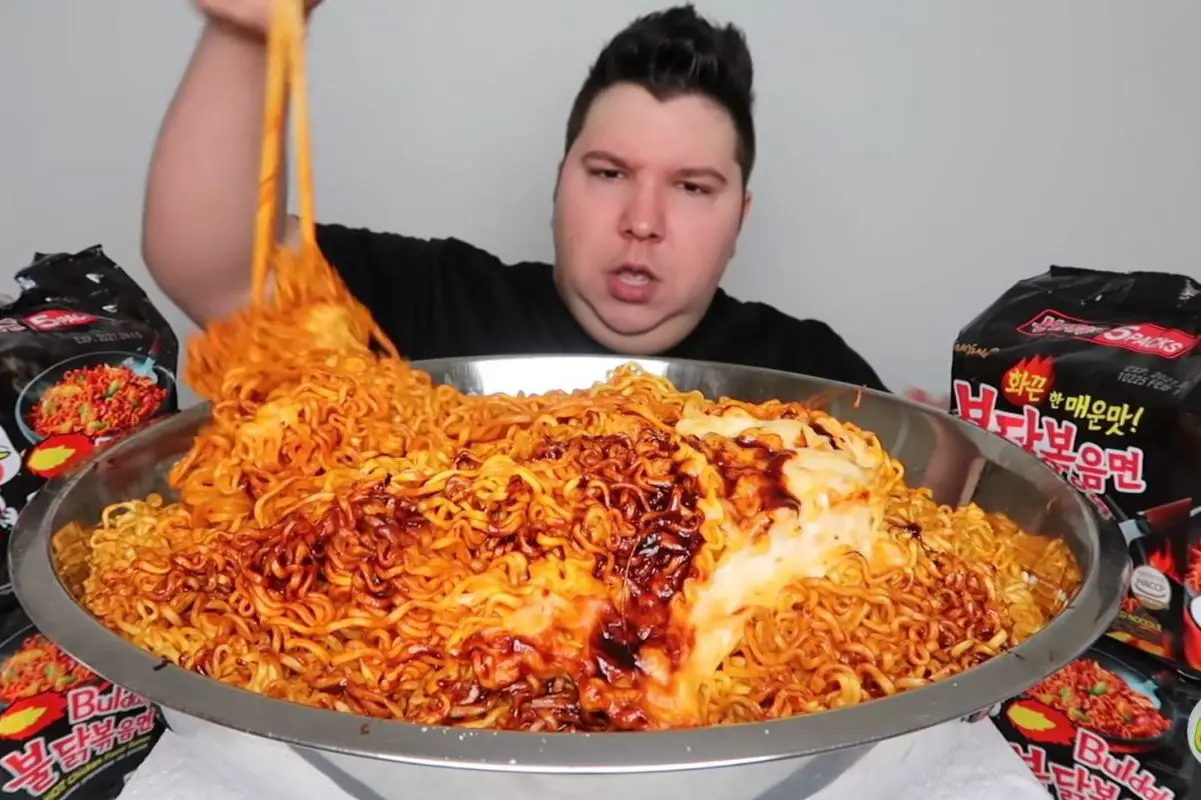For people around the world, the digital age has opened the doors for many career options that weren’t even fathomable 20 years ago. Earning a stable income from content creation is now a full-time career for thousands of people, giving testimony to the wonders of the virtual realm. Food ASMR and mukbang videos in particular are a popular way for users on YouTube to devote their time and efforts.
However, a dark side exists to these videos and how they are made, with hundreds of calories consumed in a single sitting, endangered animals being killed and cooked on screen as well as dramatic scandals that seem to plague most online communities at one point or another. As the mukbang and food ASMR genres have expanded and evolved over time, many content creators continue to stretch themselves to the extreme to churn out the content that their livelihoods depend upon — oftentimes at the cost of their health.
Although the concept of mukbang was initially popularized in South Korea, YouTubers from all around the world have latched onto the practices of this type of eating show. A mukbang typically centers around a person either buying or making food — usually in excess — and eating the serving in front of a camera while telling stories in pre-recorded videos or engaging directly with viewers on livestreams. The idea behind these mukbangs could very well be a result of the lonely, isolated lives that many South Koreans live, with a large majority of the population living by themselves. Perhaps these shows came about as a way for people to connect without the pressure of following certain etiquette or the discomfort of trying to make friends while leading a busy life.
Now, the culture has blossomed: Mukbangers and ASMRtists such as Stephanie Soo, SAS-ASMR, Dorothy and Zach Choi are among a multitude of content creators that upload daily videos of food consumption to their channels from all around the world. Many of these channels are quite popular, with subscriber counts in the millions and an ample number of views on all their videos. The exact reason why people enjoy these types of videos isn’t entirely known, but there are some plausible ideas that come to mind:
- The food content is mesmerizing in and of itself: Many mukbang and ASMR channels present themselves and their dishes well, sometimes going to great lengths to capture flattering angles of the food and its preparation, as well as organizing the layout in enthralling ways. The visual appeal of food plays as great of a role as taste in an eating experience, so it is no surprise that food layouts that are more alluring to viewers do better. Additionally, there is the factor of curiosity: It’s not every day that someone would get to eat traditional ramen or lobster, but perhaps watching someone else eat and enjoy it is all that is necessary.
- Vicarious satiation: Stemming from this idea of “satisfaction” is the phenomenon of satisfying a food craving by simply watching someone else achieve it and then reaping the neurological response as if you had achieved it yourself. Besides the glory in the image of food (as mentioned above), food cravings themselves leave a person with a watering mouth and a gnawing in their stomachs for tastes and other satisfying food-related sensations. In other words, if you were to watch someone eat a sandwich in a mukbang video, you might finish the video feeling full despite not eating the sandwich yourself. However, this is not always the case and oftentimes viewers leave videos feeling hungry, even if they have already eaten, because their brain has been stimulated to that point. So what other reason would there be for someone to regularly put themselves through that?
- Fetish: The reality of the modern-day digital world is that anything and everything can be — and probably is — fetishized. But interestingly enough, the connection between food fetish and sexual fetish can be more easily justified, as both eating and reproduction are central human instincts and many parallels can be drawn between the two (as you may unintentionally have discovered if you have ever had the misfortune of eating a banana around the wrong person). Some mukbang channels heavily capitalize on this sentiment like DICKHUNTER, who is famously known for his intense and suggestive mukbang/ASMR videos.
The excessively enormous bites that certain mukbangers take or the way they articulate their enjoyment of the food are sometimes exceptionally overt, and some viewers take no time in commenting on these sentiments.
However, most of these food channels are not so blatantly sexual; perhaps, then, the interest lies in a far more basic instinct: A lot of scandals have popped up among content creators in the mukbang and ASMR YouTube community, and drama has always sold. Whether it’s a petty argument of “he said, she said,” or something more serious such as the conflict between Stephanie Soo and Nicocado Avocado or Veronica Wang’s mental health, viewers are drawn to them.
In fact, drama channels on YouTube have found their own niche on the platform by documenting and commenting on these scandals so viewers can follow along as if they were watching a reality TV show. The ethics of being involved in someone else’s life aside, these scandals fuel the flames of popularity as more viewers visit these mukbangers’ channels for the scandal instead of the food content, and the wheel turns even further as some of these content creators leverage this by steadily becoming more and more extreme:
Nikocado Avocado (Nicholas Perry), once a charismatic violinist who shared his passion for veganism on his YouTube channel, has churned out content rife with seemingly unwarranted emotional outbursts between fistfuls of nutritionally barren food. While Perry defends his channel and has explained to viewers that how he handles himself on screen is an act and an exaggeration, the toll on both his mental and physical health is increasingly apparent. The content creator has asserted that his channel does not do so well when he makes healthier, more realistic videos and has even gone so far as to blame his viewers for his current state of health. Whether or not Perry’s claims hold value, the objective reality is that developing a dangerous relationship with food is not good for anyone’s health, even if it is your livelihood.
Additionally, certain mukbang channels go one step further into extremes by cooking and eating live seafood. While some creators prepare their meals without an eye for clicks generated by shock value, others like Ssoyoung take things to the extreme by eating live octopi or laughing nervously as a shark tries to frantically escape the crushing space it is kept in. Some mukbangers and ASMRtists have even eaten species with declining populations, such as the horseshoe crab, all to generate channel traffic to make revenue.
While generating income for yourself is a struggle many people in the world face today, subjecting your physical and mental health to strain or going to extremes for shock value views is not always ideal or worth it. The mukbang genre is certainly interesting, but the undertones of caution found deep in its videos should be heeded.

















These dangers are real. Thanks for sharing them.